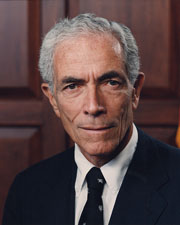U.S. Rep. Mark Pocan went to great lengths to finance his degree. He took out loans, worked part-time and even did magic shows to help pay for college.
But it was another bit of magic that helped the Wisconsin Democrat avoid too much debt when he left University of Wisconsin-Madison with a bachelor’s degree in journalism: the federal Pell Grant program.
“Pell grants were instrumental for me to be able to graduate,” he says.
This excerpt comes from the current issue of the Community College Journal, which is published by the American Association of Community Colleges.
Pocan isn’t alone. In the 2019-20 academic year, the most recent for which federal data are available, nearly 7 million students benefited from Pell grants. More than 80% of these recipients had family incomes below $40,000.
Created in 1972, the Pell Grant program awards grants to low-income students to help pay for whatever accredited U.S. college they choose. Totaling $28.4 billion in 2019-20, the program is the most significant source of federal student aid for college.
“Pell grants are a great equalizer,” says Pocan, who serves on the House Education and Labor Committee. “They’re the single best way we have to make college affordable for everyone.”

However, as the program turns 50 this year, many advocates are hoping to expand its reach and impact even further. They note that the size of Pell awards hasn’t kept pace with the rising cost of a college education. And two-year college advocates would like to see eligibility expanded to high-quality, short-term programs.
In the mid-1970s, the maximum Pell Grant award covered 100% of the average cost to attend a public two-year college and 79% of the average cost to attend a public four-year institution. Today, it covers just over half the average cost of attending a public two-year college and only 30% of the annual cost of a public four-year school.
“That leaves students borrowing more or simply dropping out when they can no longer afford to pay for tuition,” says Stephen Head, chancellor of Lone Star College in Texas, and a member of the American Association of Community Colleges board of directors.
A ‘worry-free’ education
Undergraduate students with limited financial means are eligible to receive Pell grants. Unlike loans, Pell grants don’t have to be repaid except in certain circumstances, such as if a student withdraws early from their program of study.
How much aid students get is determined by their need and the cost of the school they attend. The maximum Pell amount changes yearly; for the 2022-23 school year, it’s $6,895.
Related article: How Pell grants got started
For Carlos Randolph, a 45-year-old part-time student studying criminal justice at the Community College of Baltimore County (CCBC) in Maryland, college wouldn’t be affordable if not for Pell grants. Randolph, a parent of two children who works full-time providing security for a state mental health hospital, decided in 2020 to finally earn a degree.
“I had been working for 20 years, and education was the missing piece in my toolbox,” he says.
When Randolph applied to CCBC, he wasn’t sure how he would pay for college. His advisor walked him through the financial aid process, and when Randolph saw his Pell Grant award, his financial concerns disappeared.
“It changed my whole mindset and made me more motivated,” he says. “I’m now worry-free when it comes to my education. All I have to do is stay enrolled and keep my grades up.”
In his job at the state hospital, Randolph monitors patients who are considered incompetent to stand trial for their alleged crimes. He assists with patient care and visitation, and he responds to incidents that can sometimes become violent. Earning a criminal justice degree from CCBC not only will advance his career prospects; it’s also helping him perform his day-to-day responsibilities more effectively.
An ethics and diversity course has helped him become more empathetic and understanding in dealing with the hospital’s diverse patients, and his English courses have improved his report-writing skills.
With the help of his education, “I’m becoming more of an asset,” Randolph says.

